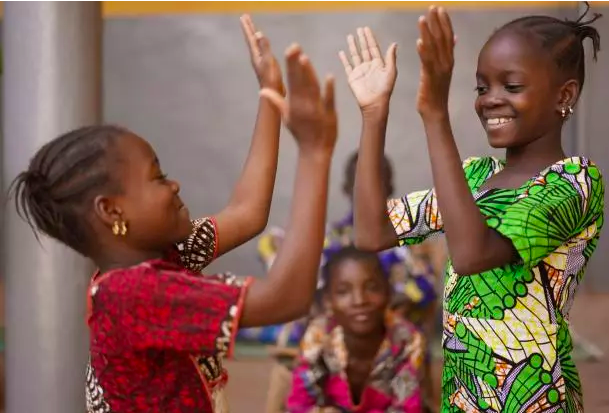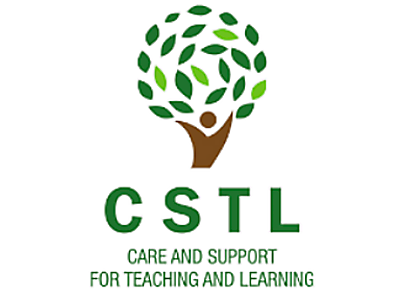Ending school violence for better mental health and learning
Posted by Letswalo L Marobane on 18 January 2024, 10:30 SAST

What is the context around school violence?
School violence is widespread. It can be physical, psychological or sexual and include gender-based violence, bullying and cyberbullying.
While schools are meant to be safe and supportive environments for learners and teachers, evidence shows this is not always the case: every year, across the world, one billion children face violence, including in and around schools.
One in three learners aged 11-15 is bullied at least once every month. Over 36% of learners experience a physical fight with their peers and almost one in three has been physically attacked at least once in a year. One in ten children are affected by cyberbullying. Data on sexual violence in and around schools is limited but there is evidence that it significantly affects learners of all genders.
How does school violence affect mental health and learning?
School violence – including bullying, cyberbullying and gender-based violence – has severe and long-lasting consequences on the mental health, well-being and education of children and adolescents.
Experiences at school such as violence amongst peers and bullying have been associated with anxiety, depression, suicidal thoughts and actions, and self-harm. Perpetrating violence is also associated with poor mental health, with evidence that children with emotional and behavioural disorders can engage in aggressive behaviours.
Violence affects children’s ability to learn. Learners facing or witnessing school violence are more likely to miss school, have lower grades and even drop out of school. Children who are bullied are twice as likely to feel lonely, to be unable to sleep and to have contemplated suicide. Preventing and responding to school violence including bullying, both offline and online, and gender-based violence, can have a direct impact on the protection of learners, their mental health and in turn, their learning. Teachers may also experience or witness violence, and many report stress and fear at working in a violent environment.Why does gender matter to school violence and mental health?
Gender norms and stereotypes shape the prevalence and experiences of school violence. Boys are more likely to be involved in physical fights and to have been physically attacked than girls. Psychological bullying affects girls more.
Although learners of all genders can experience sexual violence in and around school, girls and learners perceived to have different sexual orientations, gender identities and expressions are most at risk. It is important to note that gender influences the kind of violence children face in school and in society, and the impact that violence will have.
Teachers and learners alike may experience or contribute to violence or harmful gender norms in educational settings. Some teachers – depending on their gender, age or experience in the profession – may be more likely to face gendered-discrimination.
What is UNESCO doing to foster safe learning environments and safeguard learners’ mental health in and through education?
UNESCO works through research, advocacy, technical guidance and capacity-building to ensure all children and youth learn and thrive in safe and supportive learning environments.
For example, in collaboration with WHO, UNICEF and other partners, UNESCO developed a guidance to promote mental health and well-being using a health-promoting school and systems approach. UNESCO is also working with Member States in the Asia and Pacific region to test a practical tool that reviews and assesses mental health and psychological support services in their education systems. UNESCO also provides guidance on preventing and responding to school violence – and produces evidence to help countries make decisions about their investments and efforts in violence prevention.
UNESCO also leads and contributes to partnerships such as the Global working group to end school-related gender-based violence (SRGBV), Safe to Learn, INSPIRE, the World Anti-Bullying Forum and Power of zero, among others.
Schools and broader education systems present unique opportunities to prevent and respond to violence as a driver of poor mental health, and support learners’ overall well-being. Promising practice includes:
-
Putting legislation, policies and frameworks into place protecting learners from school violence including corporal punishment
-
Supporting pre- and in-service training on mental health and child protection for school staff
-
Developing school policies and mechanisms to identify at-risk learners, report incidents and provide referrals to appropriate services and support
-
Integrating violence prevention and mental health in school curricula and teaching
-
Promoting a safe, welcoming physical environment where learners of various genders have access to separate, lockable toilets, and well-lit and adequate space for learning, play and rest
-
Promoting a positive socio-emotional environment, for example through peer support, clubs and extra-curricular activities, as well as a positive, gender-equal environment for teachers
-
Strengthening access to and use of health-related services including mental health and protection at school and/or through community networks
How can curriculum activities foster mental health and prevent violence?
Various curriculum approaches are being used in many countries and can be replicated or scaled up in many settings. Some focus specifically on violence prevention, others are housed within a broader curriculum that build skills and values.
Socio-emotional learning (SEL) help learners develop self-awareness, self-control, ability to cope with stressful situations and interpersonal skills. High quality SEL has been shown to improve academic performance and classroom behaviour. Emerging evidence links SEL with school violence reduction. SEL can be a standalone content, integrated into other subjects and activities, or model positive behaviours and values.
Comprehensive sexuality education (CSE) is a curriculum-based process of teaching and learning about the cognitive, emotional, physical and social aspects of sexuality. Evidence shows that when CSE explicitly addresses the issues of gender and power relations, it can help reduce sexual harassment, gender-based violence and intimate partner violence. CSE aims to equip learners with knowledge, skills, attitudes and values that empower them to develop respectful relationships, and understand and protect their rights including the right to an education and a life free of violence.
What role do teachers play?
Teachers play a key role in creating health-promoting, safe learning environments:
-
Providing education that strengthens learners’ social and emotional skills and promotes respect and care
-
Ensuring psychological and physical safety in the classroom and at school including through gender equitable and inclusive classroom management techniques
-
Modeling caring relationships, positive approaches to conflict management and discipline, and respect for diversity and difference
-
Identifying at-risk learners and signs of violence, abuse, neglect or distress
-
Reporting incidents through appropriate channels and connect learners with referral services
-
Acting as mental health and child protection focal points to bridge the gap between schools, communities and services
-
Protecting their own mental health and well-being in order to safeguard that of others
To take this role, teachers urgently need appropriate pre-service and in-service training that includes content on mental health, protection, and gender and inclusion. This training must make space for discussing teachers’ own biases or understanding including when it comes to violence, mental health, and gender and social norms driving violence, recognizing that these are sensitive and complex topics.
How can other education stakeholders contribute?
Promoting a safe and supportive learning environment requires the support and capacitation of many stakeholders and a whole-school approach.
Everyone at school and within the broader education system has a role to play, from school personnel to the community, from parents and carers to policy-makers and decisionmakers. Beyond the education space, fostering safe and supporting learning environments requires engaging with other sectors such as health and child protection, recognizing the multiple factors that contribute to learners’ safety, mental health and well-being.
More resources:
